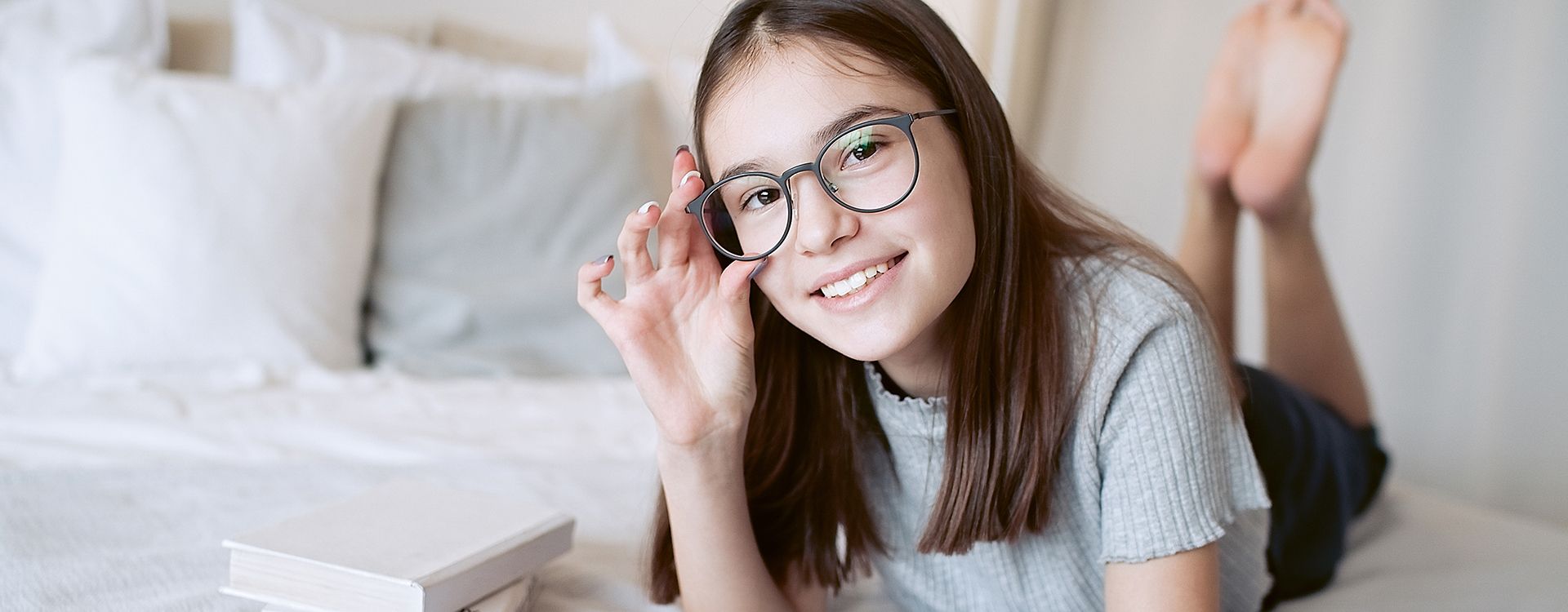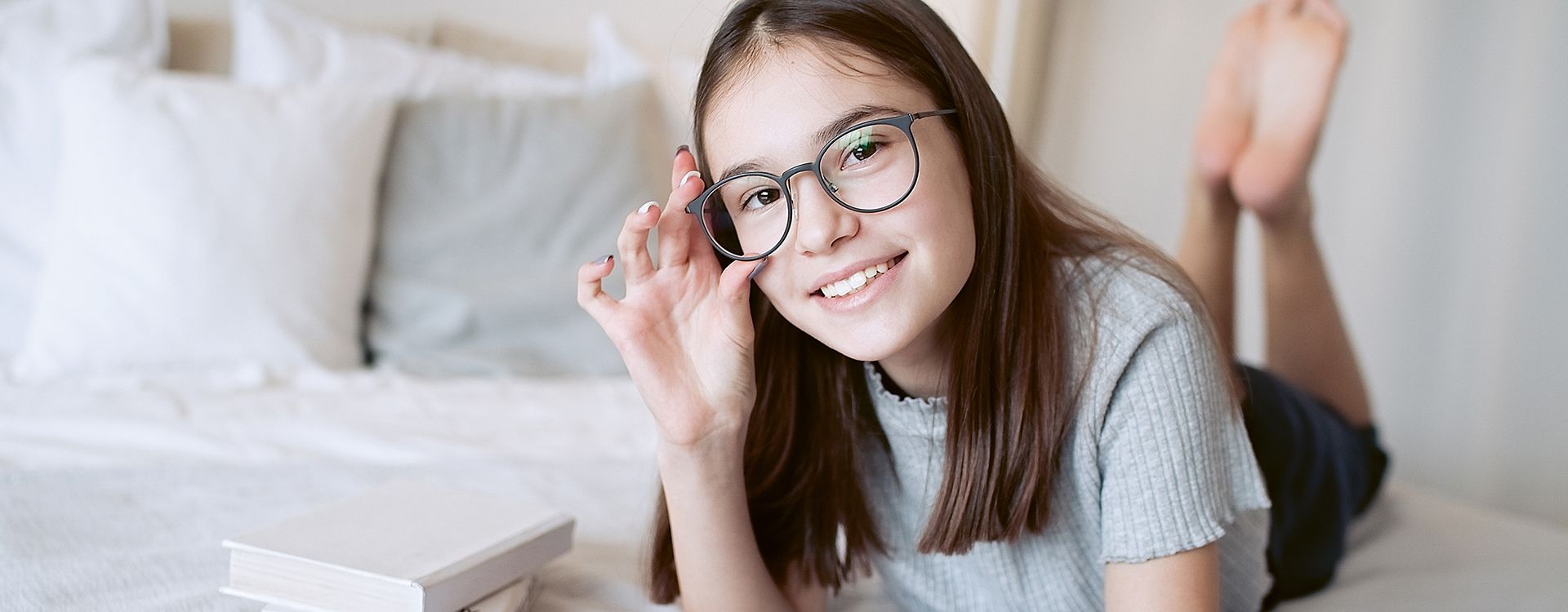Your child’s eyesight
The importance of early eye examinations for children
Visual acuity reaches its ultimate stage of development between the ages of 6 and 7. One year after birth, a child’s vision is equivalent to that of an adult, but it can still evolve until they reach the age of seven thanks to brain plasticity. If a child suffers from a visual disorder, this is a good time for an effective intervention.
That is why an early screening of the child’s vision is very important. It is possible to do it from the age of 1 year with certain specialized ophthalmologists.
However, certain factors must lead to increased vigilance. First, the family background: the presence of significant visual disorders in the parents (in particular, strong corrections) constitutes a risk factor and it must be an additional reason for early check-up of the child.


Second, the suspicion of strabismus or difficulty in fixation: if you notice that the child is cross-eyed or that they have difficulty in fixing their gaze, it is imperative to carry out a check-up without delay.
If poor vision is related to a refractive disorder, a correction of the disorder will improve the child’s visual ability. If this correction is not made in time, it will result in amblyopia (difference in vision between the two eyes: one eye sees well, the other badly) and in definitive and irreversible poor visual acuity. Even if the eye is anatomically perfect, the brain will no longer have the capacity to improve its vision. A check-up at around the age of 4 or 5 can still detect refractive disorders and treat possible amblyopia.
The bottom line is that the earlier the treatment starts, the more chances there are of restoring satisfactory vision. If visual disorders are detected after the age of 7, they are irreversible, and the child will have to wear glasses.
Strabismus and amblyopia
Un enfant qui louche n’a pas de vision binoculaire et de ce fait ne peut pas fixer le même objet avec les deux yeux. Le danger, c'est qu'un œil travaille plus que l'autre et empêche sa stimulation, lui faisant perdre de son acuité visuelle. Cet œil paresseux va alors devenir amblyope et le restera s’il n’y a pas de rééducation. Une pénalisation temporaire du bon œil, par occlusion par exemple, permettra d’exercer l’œil faible qui pourra ainsi retrouver une bonne acuité visuelle, à condition que cela se fasse avant l'âge fatidique des 6-7 ans.
Pediatric check-ups and eye examinations
It is primarily pediatricians and general practitioners who will perform these checks. They mainly use stereoscopic vision tests (such as the Lang test2) and verify distance and/or near visual acuity (using charts and reading tables). To measure visual acuity, it is sometimes necessary to wait until the child can at least recognize and name objects of different sizes. Yet, by consulting an ophthalmologist, visual acuity can be tested at a very early age via the preferential looking technique (Teller test3). General screening does take place at school, but it often occurs very late in relation to visual development (around 6-7 years). Opticians can also perform vision tests (acuity and stereoscopy).
A simple test for parents
A simple test that can be carried out on small children is eye tracking and detection of small objects within reach. Concealing one eye should not cause crying, thus proving that both eyes have equivalent vision. Nevertheless, nothing can replace screening by a specialist.
How can visual deficits be corrected?
The main solution is glasses or contact lenses, even at a very early age. In case of amblyopia, treatment by occlusion is often necessary.
Once a diagnosis of myopia or astigmatism has been given by an eye doctor, all that remains is to find glasses adapted to the child. Several brands offer high-quality frames that will appeal to them. Ray-Ban, Oakley and Unofficial have such a wide range of colors and styles that everyone can find something to suit their taste.
Visilab opticians are there to suggest attractive, comfortable frames that correspond to the child’s morphology, so that they will feel comfortable in everyday life. In addition to a one-year insurance policy, parents can also purchase a Service Pack, which comes in several formulas and it includes different services.


1. Source: Exclusive interview with Dr. Philippe De Gottrau, head doctor at the Freiburg Eye Hospital, August 2015.
2. The Lang test involves a board with a cloud of apparently randomly arranged points. It should be placed flat in front of the child. Drawings in relief can be seen if they have normal stereoscopic vision.
3. The child is placed on their mother’s lap at 57 cm from a large gray screen with an opening at eye level the size of a Teller card: at 38 cm for children under 3 months and at 84 cm for those over 12 months. The examiner, positioned on the other side of the screen, attracts the child’s attention through the opening before concealing it using a card with a grating to the left or right. He does not know the location of the grating, but he sees through the small median hole in the card that the child’s gaze is directed, for example, to the right. On reversing the position of the card, he watches as the child’s gaze is now directed to the left. He then checks to see if the grating was on the side the child looked toward each time. He then positions the next card with a finer grating against the opening and so on until the child’s eyes are no longer drawn to a grating that they cannot see. The last card seen results in an acuity score, allowing a comparison to be drawn with reference to the norms as well as between the two eyes. An initial examination in binocular vision and then eye by eye takes no more than 5 to 6 minutes.





